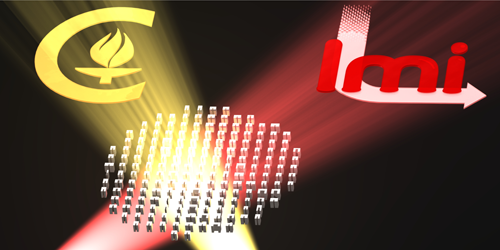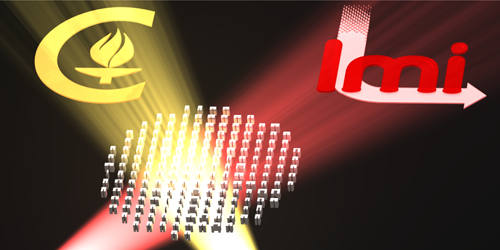One Device, Two Holograms
Thin optical devices typically perform the same function when illuminated from different angles. Holograms, for instance, will project the same image regardless of the angle of illumination. Now, researchers have designed two optical devices, both of which respond distinctly to light incident at two different illumination angles. The first is a hologram that displays different images when illuminated head on and at . The second is a diffraction grating with different effective grating periods for the two angles. The researchers suggest that these types of devices could encode the functions of independent optical components—a grating, lens, hologram, or the like—at different illumination angles, behaving as a multifunctional optical system.
The devices, developed by Andrei Faraon from the California Institute of Technology, Pasadena, and colleagues, are “metasurfaces” consisting of a square array of U-shaped silicon elements sitting on a supporting layer. The height, width, depth, and length of the two U arms are varied across the array to form a desired pattern. The pattern is chosen so that polarized light incoming at angles of and undergoes different phase shifts as it interacts with the metasurface. This creates independent phase profiles for these two illumination angles, allowing each of the devices to have two completely different optical outputs.
In this way, the team created a diffraction grating whose effective grating period varies by ten wavelengths for the two incidence angles. They also created a hologram that projects the logo of Caltech for illumination at and that of LMI—one of Caltech’s research centers—for illumination at . So far, the team has only encoded functions at two illumination angles into the devices, but they suggest that other metamaterial patterns could increase this number.
This research is published in Physical Review X.
–Katherine Wright
Katherine Wright is a Contributing Editor for Physics.





